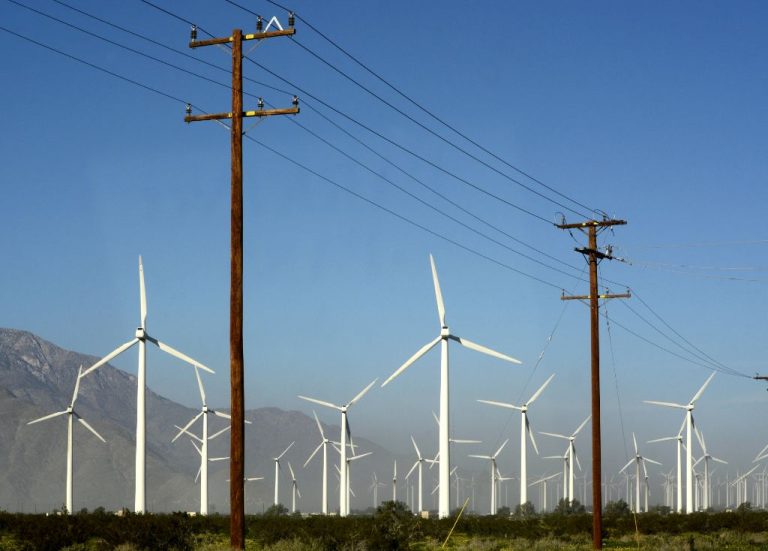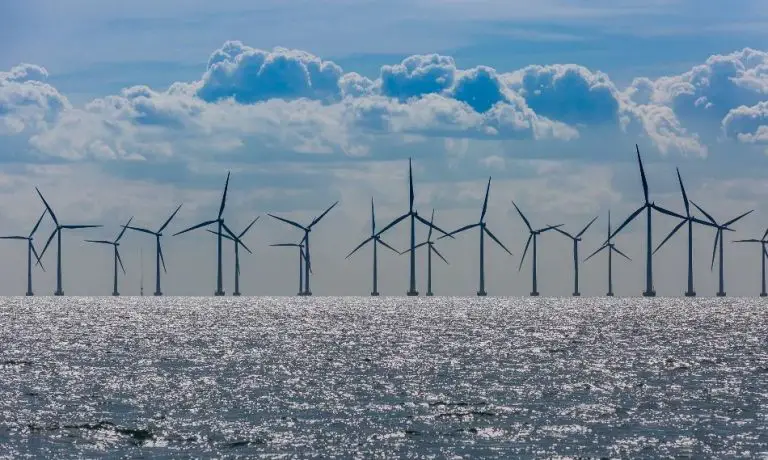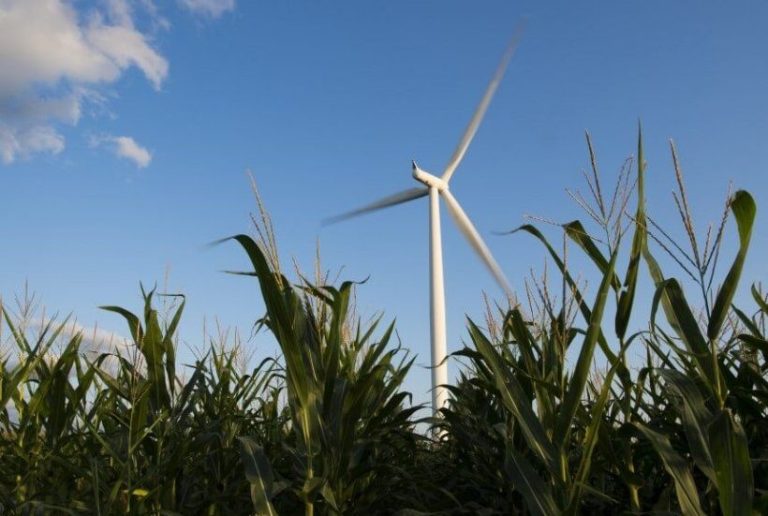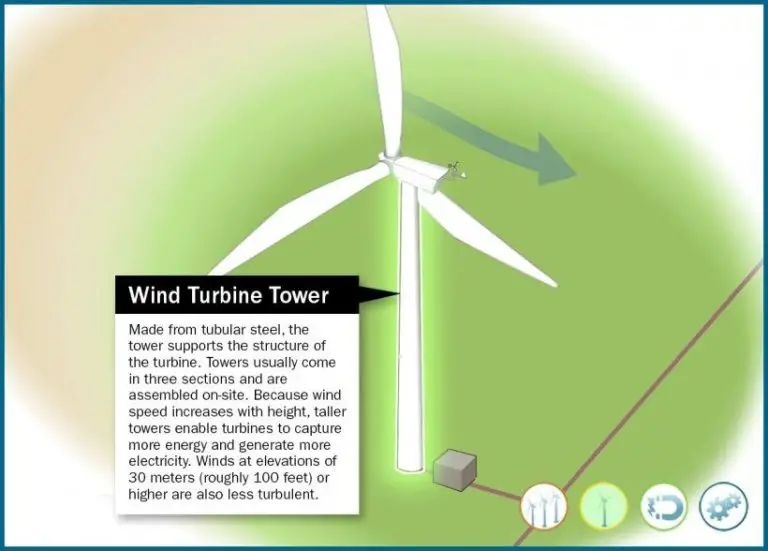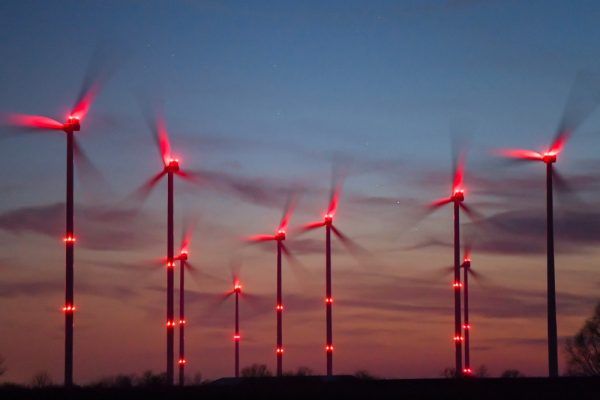What Are The Simple Points Of Wind Energy?
Wind Energy Basics
Wind energy is the kinetic energy generated from the movement of air, which is converted into mechanical energy by wind turbines and used to generate electricity. Wind is caused by the uneven heating of the earth’s surface from the sun. As hot air rises, cooler air rushes in to fill the void, creating wind currents. Wind energy is considered a renewable energy source, as wind will continually reoccur as long as the sun shines.
Wind turbines convert the kinetic energy of wind into rotational motion to spin a generator to produce electricity. The turbines are mounted on tall towers to capture stronger wind currents at higher altitudes. Wind turns the blades, which spin a shaft connected to a generator that converts the mechanical rotation into electrical power. Modern wind turbines can efficiently generate electricity when wind speeds are between 13 to 90 mph.
Compared to fossil fuels, wind energy produces negligible emissions and air pollution. Wind farms can also be built on land that has existing uses like farming and ranching. With abundant wind resources available in many parts of the world, wind power has emerged as one of the most rapidly growing renewable energy sources globally.
History of Wind Power
People have been harnessing the power of the wind for thousands of years. The first known windmills were built in Persia around 500-900 AD and were used to grind grain or pump water. These early windmills had a vertical axis, with sails made from bundles of reeds or wood. The concept spread across the Middle East and Central Asia and eventually spread to China and India in the 13th century. Horizontal axis windmills, like the traditional Dutch style windmills, started emerging in Europe in the 12th century. These windmills with their cloth sails were an important source of power through the Middle Ages and into the 20th century.
In the late 19th century, the first wind turbines capable of generating electricity were developed. One of the earliest was built in Scotland in 1887 by Professor James Blyth. His 10 meter tall turbine was able to generate enough power to run his home’s lights. In the early 1900s, larger electricity generating wind turbines were installed in Denmark, Germany and the United States. These early wind turbines could generate anywhere from 100 watts to 1.25 megawatts.
By the 1970s, higher efficiency wind turbines were designed to convert the rotational energy directly into electricity. New materials like fiberglass, advanced bearings and new blade profiles helped drive progress. In the 1980s, many new wind farms consisting of dozens of individual wind turbines were installed in California, with a capacity of around 1-3 megawatts per turbine. This established the beginning of the commercial wind power industry.
Wind Turbine Technology
Modern wind turbines consist of a few key components that allow them to efficiently capture the power of the wind and convert it into electricity.
Parts of a Wind Turbine
The major components of a wind turbine include:
- Rotor – The blades and hub that rotate when wind blows past them.
- Nacelle – The body that sits atop the tower and contains the gearbox, generator, controller, brake, and transformer.
- Tower – Supports the nacelle and rotor blades high up where winds are stronger and less turbulent.
- Foundation – Secures the wind turbine firmly into the ground.
Size and Capacity
Utility-scale wind turbines are massive in size. Modern horizontal-axis turbines have rotor diameters spanning over 160 feet and towers reaching heights above 260 feet. The power output of a turbine is proportional to the swept area of its blades. As turbine sizes have increased over the years, so has their generating capacity.
Today’s commercial scale turbines range in capacity from around 2 – 5 megawatts. Offshore turbines are being built up to 12 megawatts. Continued technological advancements are leading to larger and more efficient turbines.
Wind Power Generation
Wind power contributes valuable zero-carbon electricity to power grids worldwide. In 2021, wind energy became the third largest contributor to global electricity supply after coal and natural gas power. Many countries now rely on wind power for 10-15% of their total electricity, with Denmark obtaining nearly 50% of its power from wind.
However, wind turbines do not generate electricity all the time due to the intermittent nature of wind. The capacity factor of wind farms ranges from 25-45%, meaning they produce about a quarter to half of their maximum potential output over a year. This is lower than traditional power plants that can operate at capacity factors above 60%.
The variability of wind power output requires grid operators to balance electricity supply and demand. Other generating sources like natural gas and hydropower plants help manage wind power’s intermittency. Energy storage technologies can also store excess wind power during high wind periods and discharge when wind generation is lower. Forecasting wind availability helps grid operators schedule other power sources accordingly.
Offshore Wind Farms
Offshore wind farms are increasingly being built to harness stronger and more consistent winds found over bodies of water. Locating wind turbines offshore provides some key advantages compared to onshore wind farms.
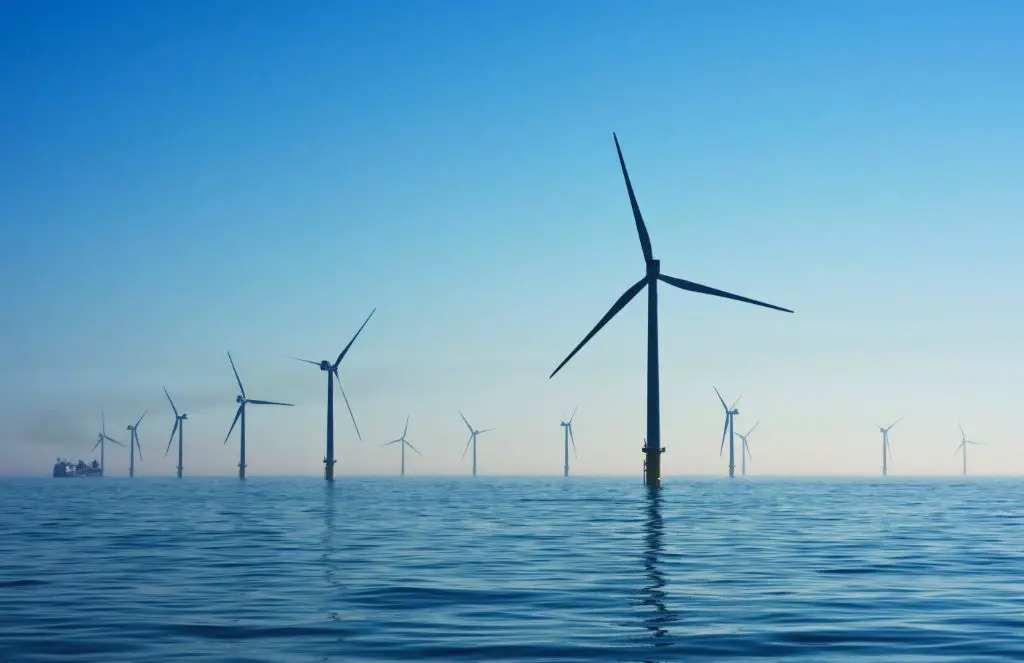
Some benefits of offshore wind farms include:
- Higher wind speeds over water mean more energy can be generated. Winds are stronger and more consistent offshore.
- Building larger turbines is possible offshore, leading to greater energy capture.
- Offshore farms are located away from populated areas, reducing visual impact and noise.
- The vast open spaces over bodies of water provide ample room for large-scale wind projects.
- Coastal regions tend to have high energy demand, so offshore wind can provide local power.
However, offshore wind power also has some unique challenges, such as:
- Construction and maintenance costs are higher in the marine environment.
- Undersea cables are needed to transmit power back to land.
- Offshore sites can be impacted by storms, waves, and saltwater corrosion.
- Special ships are required to transport and install large components offshore.
- Environmental impacts on marine habitats and species must be considered.
Overall, offshore wind energy offers significant potential to provide clean renewable power, despite greater complexity and costs compared to onshore wind projects.
Wind Power Economics
Wind power generation has become increasingly cost-competitive over the past decades. In 2014, wind power prices reached an all-time low, with the global average cost of onshore wind power about $0.06 per kWh. Costs have continued to decline, with the 2021 global average levelized cost of electricity (LCOE) for onshore wind reaching $0.04 per kWh. For comparison, the costs of building new coal and gas power plants are $0.05-0.10 per kWh and $0.05-0.17 per kWh, respectively.
Several factors contribute to wind power’s favorable economics. Technological advances, larger turbines, improved capacity factors, economies of scale, and competitive supply chains have all driven down costs. Government incentives like production tax credits have also helped accelerate cost declines in the United States and other markets. In places with excellent wind resources, wind is now the cheapest source of new electricity generation. Even without subsidies, new wind power plants can compete with the operational costs alone of existing fossil fuel plants in some regions.
Experts predict that as wind turbine technology continues improving and wind farms expand, costs will decrease a further 10-20% by 2030. With such declines, wind power is projected to account for up to 25% of global electricity generation by 2030, displacing coal and natural gas. Wind energy’s competitiveness remains heavily dependent on government policies, however. The expiration of tax credits in the U.S., for example, has previously caused new installations to slow.
Wind Energy and the Environment
Wind energy has significant benefits for the environment compared to fossil fuel sources. By generating electricity from wind power instead of coal, oil or natural gas, wind farms avoid the emissions of harmful greenhouse gases and air pollutants.
In particular, wind energy helps reduce carbon dioxide (CO2) emissions that contribute to climate change. The U.S. Department of Energy estimates that generating 20% of America’s electricity from wind by 2030 would reduce CO2 emissions by 825 million metric tons, the equivalent of taking 140 million cars off the road.
Wind power also reduces emissions of nitrogen oxides, sulfur dioxides and particulate matter that can cause smog, acid rain and respiratory problems when emitted from conventional power plants. These cleaner air benefits provide public health savings and environmental protection.
The impact of wind turbines on wildlife, especially birds and bats, has been a concern but recent studies show minimal effects compared to other man-made structures. Proper site selection, updated turbine designs and curtailment during migration seasons can help further reduce risks to birds and bats.
Wind Power Potential
Global growth projections for wind power capacity indicate enormous potential for expansion in the coming decades. Many experts estimate wind power could supply 20-25% of global electricity by 2050 if growth continues at the current pace. With newer, larger and more efficient turbine designs, wind farms can maximize power generation and help nations meet renewable energy targets.
Over the next 10-15 years, the size of individual wind turbines is expected to increase significantly. Offshore turbines approaching 10 megawatts in capacity will become more common, dwarfing the 2-3 megawatt onshore models widely used today. Floating wind turbines slated for deployment in deep water sites will unlock vast new areas for development. Blade lengths will increase to over 100 meters. Overall, these technology innovations will boost capacity factors and bring down the levelized cost of wind energy.
With vast onshore and offshore resources still untapped in many regions, from the Great Lakes to Southeast Asia, the global wind market has ample room for growth in the decades ahead. Cost reductions driven by economies of scale and technology improvements will further increase wind’s cost competitiveness with fossil fuels and nuclear power.
Wind Energy Policies
Governments around the world have implemented various policies and incentives to support the growth of wind power. This includes renewable energy targets, financial incentives, and regulatory frameworks.
Many countries have set ambitious renewable energy or wind power targets. For example, the European Union aims for wind to provide 32% of its electricity by 2030. China is targeting wind to reach 26% of its electric capacity by 2030. The United States does not have a nationwide renewable energy target, but many states have their own goals for wind power capacity.
Governments use financial incentives like tax credits, feed-in tariffs, renewable portfolio standards, and competitive auctions to stimulate wind power investment. Tax credits reduce the cost of wind power. Feed-in tariffs guarantee fixed prices for wind power for a period of time. Portfolio standards require utilities to source a percentage of power from renewables. Auctions ensure competitive pricing.
Regulations also enable wind power growth. Permitting and zoning policies make land available for wind farms. Grid access and transmission infrastructure policies enable connectivity. Other regulations address issues like wildlife impacts, aviation, radars, and public acceptance.
Overall, government policies create frameworks that facilitate wind power deployment. Well-designed regulations and incentives help overcome barriers and Drive growth in wind energy markets.
Wind Power Challenges
While wind energy continues to grow as a renewable source of electricity, there are some challenges that need to be addressed for wind power to scale up further.
One key challenge is integrating large amounts of wind power into the electric grid. Since wind speeds fluctuate, the amount of power generated also varies. Grid operators must manage this variability and ensure reliable electricity delivery. Upgrading transmission lines and using forecasting tools can help integrate more wind power.
Another challenge is land use constraints. Wind turbines require large areas of land, which can sometimes be an issue in densely populated places. Careful wind farm siting that considers local concerns is important. Offshore wind farms could help reduce land constraints.
Public perception presents a third challenge. While wind power is popular with the public overall, local opposition sometimes arises due to the turbines’ visual impact or noise. Community engagement from early planning stages and benefit sharing can often address these concerns.
With thoughtful policies and continued technology advances, the wind industry can meet these challenges and continue expanding renewable electricity generation.

